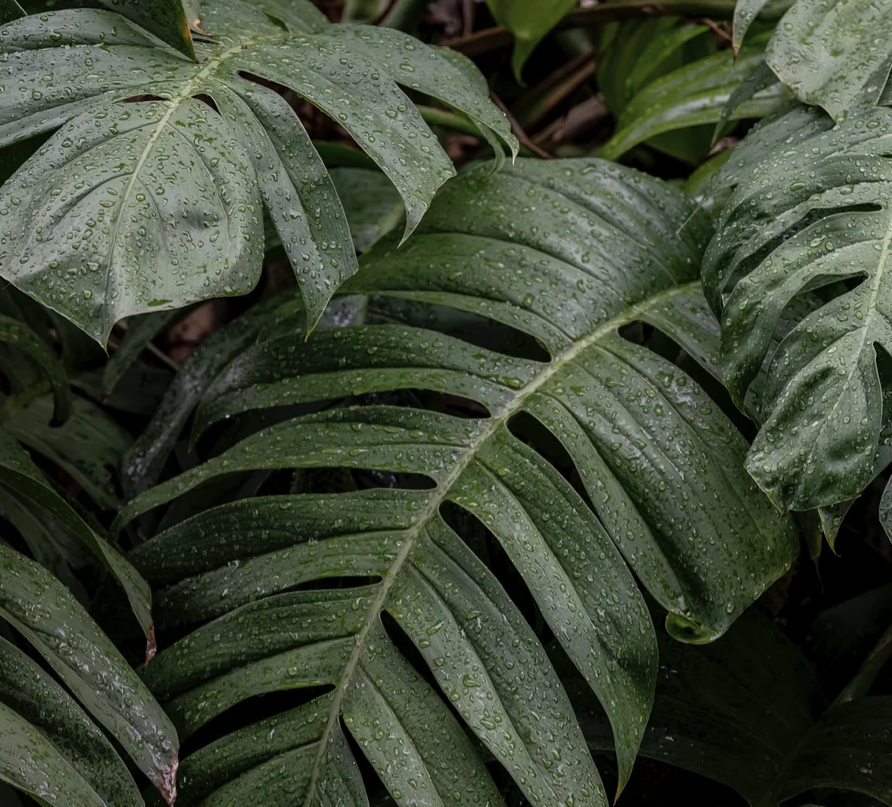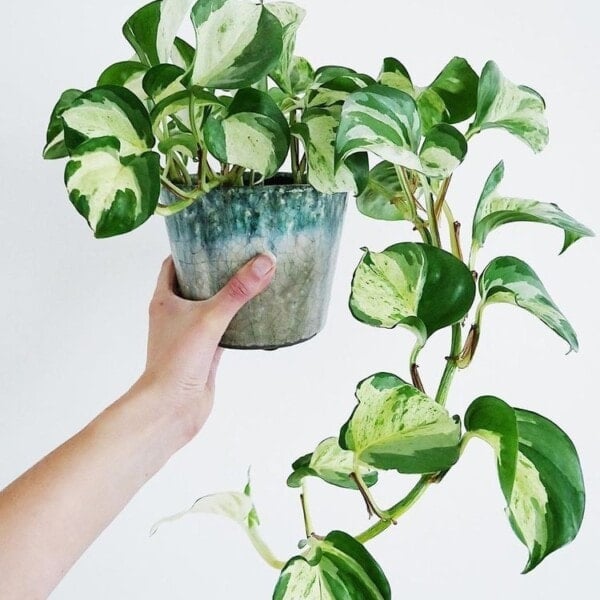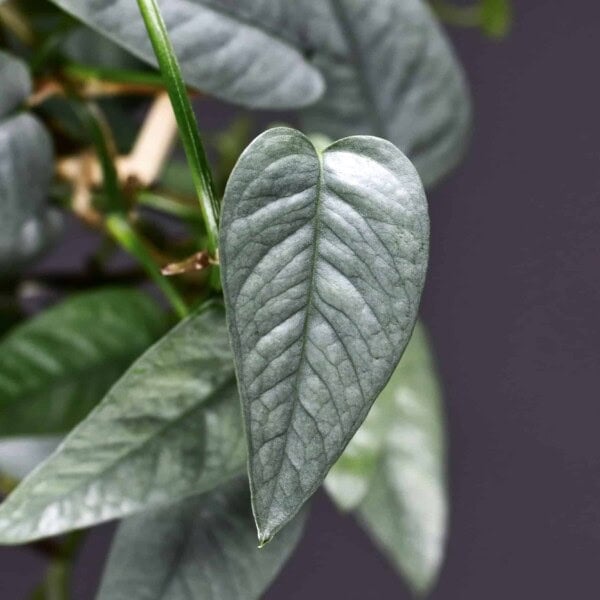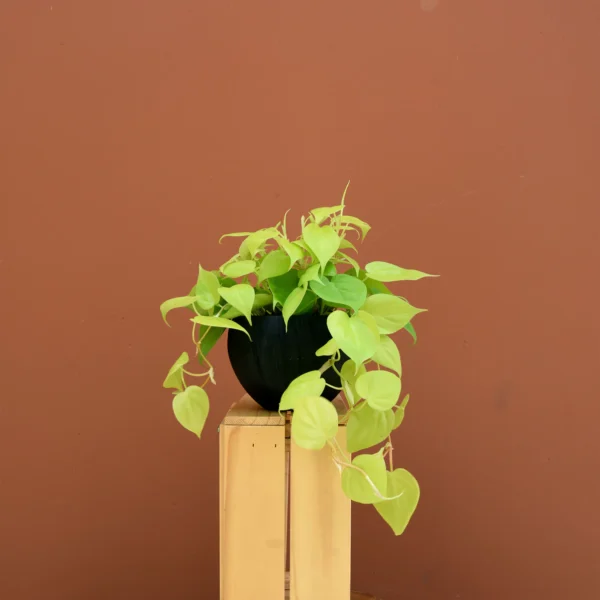As you guys know, I simply love having plants in my home! A quick trip to my local garden center is always a great time. After all, the proper balance of foliage and decor can turn even the most bleak-looking room into a lavish living space. Placement provides plenty of options, from hanging plants to potted beauties. If you’ve read through my previous blog posts you’ll know that I often recommend plants of all sizes, so you can easily find the perfect plant for pretty much any living space. However, today we’ll be taking some special large indoor plants on my list: the Monstera Plant!
What is the Monstera Plant?
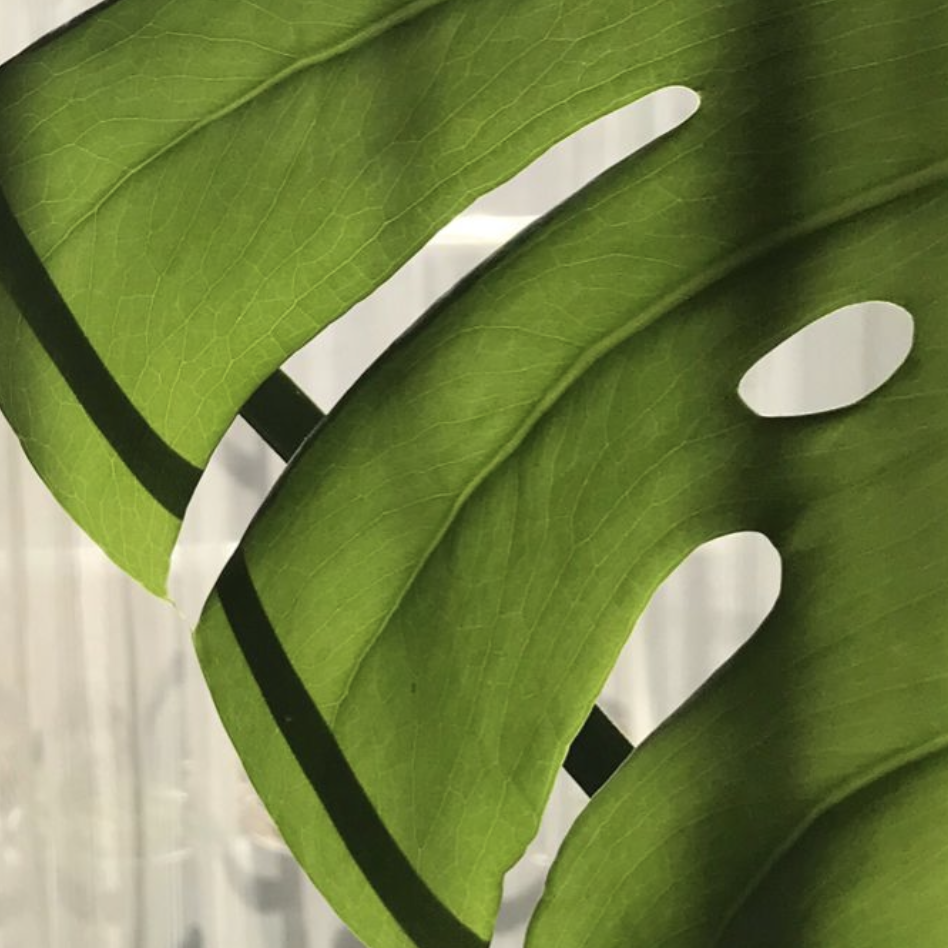
“Monstera Plant” sounds like a specific type of plant, but there are actually 48 different species to choose from (according to MonsteraPlantResource.com)! Naturally, some are harder to find in your local garden center than others. Some are relatively small, while others can grow to be over sixty feet tall in the wild. Fortunately, you’ll likely be dealing with a plant that’s nine feet or less if grown indoors, making the Monstera plant much more manageable.
Although there are 48 different species of Monstera in total, the selection at your local nursery will likely be far more limited. If there’s a specific type of Monstera plant that you’re searching for, you may have to shop around or even online to find it. But I love them no matter the species because the complement the best interior decor with ease and are not too hard to take care. These are my favorite types:
Monstera Deliciosa
This particular plant—the Monstera Deliciosa— is commonly referred to as the “Swiss Cheese Plant” due to the many holes that can form in its leaves. Don’t worry though: your plant’s not dying if you see these holes! In the wild, the Monstera Deliciosa often grows in heavily vegetated areas. The holes are thought to benefit the plant by allowing light to reach the lower leaves. However, there’s also meaning in the name “Deliciosa.”
The Monstera Deliciosa also produces fruit, known as Mexican Breadfruit. The taste is said to be a combination of pineapple, mango, and coconut, making the Deliciosa even more appealing to the average plant enthusiast. At this point, I think there’s an important detail to mention about the Monstera plant (although I’ll go over this point later in more detail). Most Monstera plants are toxic to a certain extent. This means you should usually use gloves when handling them and keep children/pets away from your beloved plant(s).
Monstera Adansonii
These large indoor plants also develop many holes throughout their leaves. They grow vines very quickly, making them a good option for people who want to start small (instead of struggling with moving a massive plant!). You can grow these Monstera plants in a hanging pot, but I personally prefer them in a standing pot instead. When provided with a stake to creep up, I think this presentation ends up looking a lot more impressive. Of course, if you bought multiple Adansonii plants from the garden center, you could also mix and match them for a varied aesthetic!
Monstera Peru
Formally known as the Monstera Karstenianum, this particular plant generally stays smaller than the first two I’ve mentioned. Like the Monstera Deliciosa and Adansonii, it can grow quickly in the right climate. However, it tends to grow no more than 20 feet long in its natural habitat. It doesn’t naturally form holes in the leaves—although it has a wax-finished look —so this Monstera plant can provide a nice variety to your indoor fauna! I’d recommend placing this plant in a hanging pot as I absolutely love the look of the leaves when they’re hanging down. Note that this will require a lot of trimming and pruning!
Preparing
After you’ve decided which variety of Monstera you want, you’ll have to figure out where to buy one. You may get lucky and find the ideal plant in Lowe’s, Home Depot, or a garden center, but often you’ll have to search around through a few nurseries before finding what you need. If that doesn’t work, you may even need to travel a little bit! You can also buy many varieties of Monstera plants online, although I personally haven’t tried this yet (so proceed at your own risk!).
The Pot
Your new large indoor plants will likely come with their own pot, but you can always start thinking of new pot ideas once you get your Monstera plants. Opinions on repotting times vary: some people say to repot your Monstera plant every year, whereas others argue that every two years is sufficient. The exact recommendations vary slightly between the different varieties, so I’d say it’s worth doing some research before repotting your plant.
Watering Can
You don’t necessarily “need” a watering can, but I’d recommend picking one up from the garden center if you haven’t already. They’re quite cheap and prevent you from accidentally overwatering your plant (or overflowing dirt everywhere!). You can find one at your local nursery, home improvement store, or on Amazon for my fav watering can
Fertilizer
You’ll need to provide your Monstera plant with the proper nutrition if you want it to grow properly. Fortunately, there are only three main macronutrients that you’ll need to focus on when looking at different types of fertilizers: Nitrogen, Phosphorus, and Potassium. You’ll often see these macronutrients represented on fertilizers in the NPK order. Monstera plants require 3 parts Nitrogen (N), one part Phosphorus (P), and two parts Potassium (K). Any fertilizers you find in the garden center—such as 3-1-2, 9-3-6, or 21-7-14 mixes —that use this ratio will work perfectly for your Monstera plant, although types of fertilizers with higher concentrations will need to be diluted!
Placement
Temperature, humidity, and light are the three main things to consider when placing a Monstera plant in your home. Fortunately, these are all fairly easy requirements to meet! The humidity in your home should be fine, but you can also add a humidifier near the Monstera plant if that particular room tends to be a bit dry. Monstera plants prefer temperatures between 68° and 86° F. It shouldn’t be too much trouble to find a room that falls within this range for these large indoor plants!
Lastly—and perhaps most importantly—your Monstera plant needs the proper lighting if you want it to grow properly. You can place yours near the sliding patio doors (like I have), across the room from a bay window, or any other place that gets a lot of natural light. However, it’s important that your Monstera plant doesn’t get too much light: you’ll want to keep it out of direct sunlight!
Monstera Plant Care
Fortunately, Monstera plants are some of the easier plants to take care of! If their living conditions and the types of fertilizers used are ideal, then the only thing you’ll need to worry about is proper watering. Both overwatering and underwatering can damage—or even kill—your precious plant! These large indoor plants only require watering every one to two weeks. To see if your Monstera needs water, touch the top of the soil. If the top few inches are dry, it needs water. If the soil is still damp, check back later.
So, what should you do if you’ve been following the steps above but your plant still looks bad? Well, first you need to determine whether you’re overwatering or underwatering. From there, you can adjust your watering habits. Yellow leaves and black stems indicate overwatering, while curling leaves suggest underwatering. Just pay attention to the leaves and you’ll be able to make sure your Monstera is getting the right amount of water!
FAQ
Is Monstera a good indoor plant?
Yup! Monstera plants are great indoors, as long as you can keep the room up to their “warm and humid” standards. I recommend maintaining a temperature between 68° F and 86° F for the room you’ve placed your Monstera plants in.
Are Monstera good for beginners?
Monstera plants don’t require a lot of care, making them ideal for beginners. As an added bonus, you can usually find them in your local garden center! As long as your home provides the proper conditions (humidity, temperature, and lighting), even gardening novices should see success with a Monstera plant. Avoid over/under-watering mishaps by reading to the end of my FAQ!
Where should I place my Monstera?
Monstera plants love light, but—like many other plants—direct sunlight is a bit too much for them. Ideally, you should place your plant in a room that gets a lot of natural, indirect sunlight. Depending on the room design, this could mean near the window or halfway across the room! Your Monstera may be able to get by with less light, but the growing conditions won’t be ideal.
Do Monstera plants need a lot of sun?
These large indoor plants do best with lots of natural, indirect sunlight. They will still grow with less sunlight, but you’ll end up noticing quite a difference if you leave them in these conditions. Rather than having leaves spread evenly throughout the stems, the stems will mainly have leaves at the end. This means your plant is searching for light (it’s also giving you the hint that it’s time to relocate it!).
How do you take care of a Monstera?
Place your Monstera plant in bright, indirect sunlight to ensure the best results. From here, you’ll simply need to remember to water the plant every week or two! Monstera plants don’t like soggy soil, so make sure the top of the soil has dried out between waterings.
Should I put rocks in my Monstera?
You can place decorative rocks from the garden center on top of the soil for aesthetic purposes. However, I generally skip this as the plant already looks amazing on its own (plus, with the rocks in the way, it will be hard to tell when the soil has dried). However, you can place lava rocks in a tray underneath the pot! Fill this tray with water and wait; the water will evaporate, providing a bit of humidity for your large indoor plants.
What happens if you don’t stake Monstera?
As a vining plant, your Monstera wants to spread its reach. If you provide it with a stake, your Monstera plant will grow up the stake. Without a stake, the vines will start to hang out of the pot. Which option is preferable will depend on how you’re displaying the plant!
Why does my Monstera look sad?
Define “sad”: do you mean curling leaves or yellowing leaves? If the leaves have begun to curl, you’ve likely underwatered your Monstera! Similarly, if your leaves are beginning to yellow (or if the stem has started to turn black), you’ve likely overwatered your Monstera plant. Adjust your watering habits as needed.
Should I put anything in the bottom of my planter?
If your pot already has drainage holes, I wouldn’t recommend placing rocks or gravel in the bottom of your planter as part of your Monstera plant care. Doing so will cause the water retained in the soil to move higher (e.i. closer) to the roots, which could cause unnecessary root rot!
Should all pots have drainage holes?
Many pots have drainage holes, but if yours doesn’t, then this is where rocks and/or gravel can come in handy! Since a pot without drainage holes won’t have any place for excess water to drain, this backup can cause root rot. Allowing the water to drain into rocks or gravel below can help prevent this saturation, but it will still move the water in the soil upwards (as noted above).
You’re Sure to Love These Large Indoor Plants!
Whether you decide to add a potted Monstera Deliciosa to your living room or a hanging Adansonii to your kitchen, these large indoor plants have plenty of offer when it comes to livening up your household! I absolutely love how each species has its own unique quirks, particularly in the leaves.
Although you may need to shop around a bit if you want a specific type of Monstera plant, your local garden center should have at least some of the common varieties available. While you’re there, don’t forget to compare pots and different types of fertilizers to give your new potted pal the best Monstera plant care possible!
There are many more different species of Monstera than the few I’ve listed above, so I’d love to know what species—and other types of plants—you guys have in your homes. Did you purchase a new Monstera, are you planning to in the near future, or perhaps you already had one gracing your space with its presence? Let me know in the comments below!

